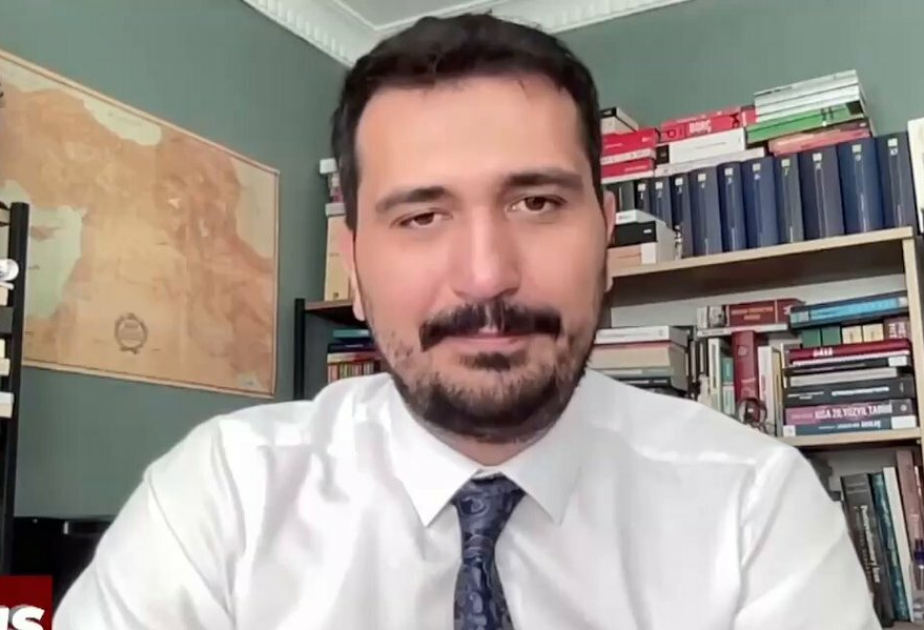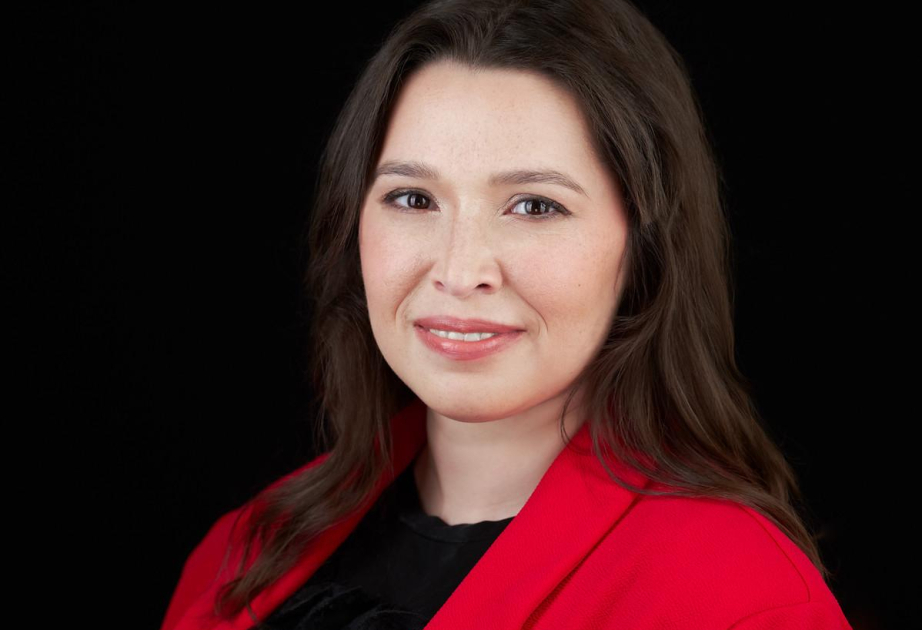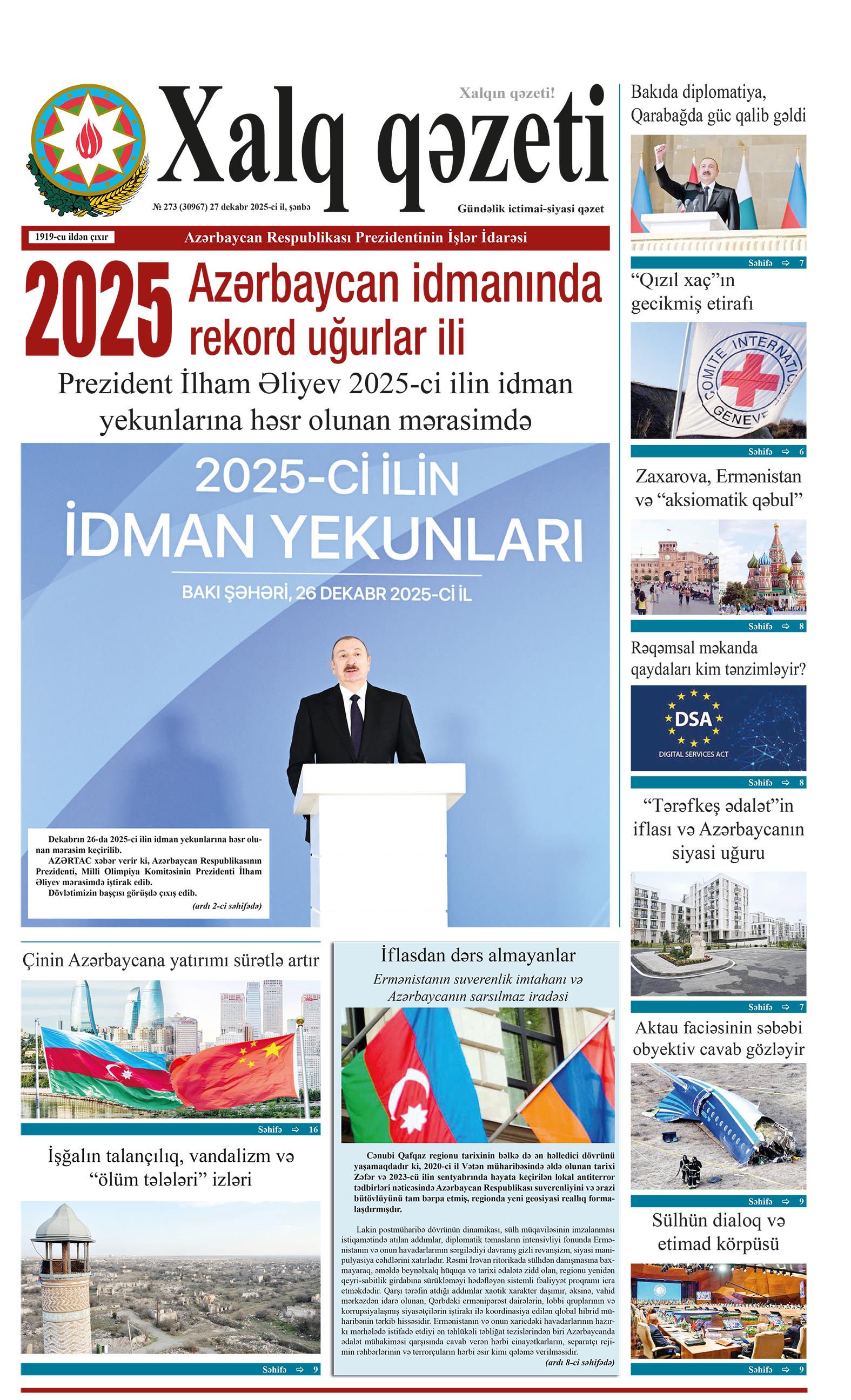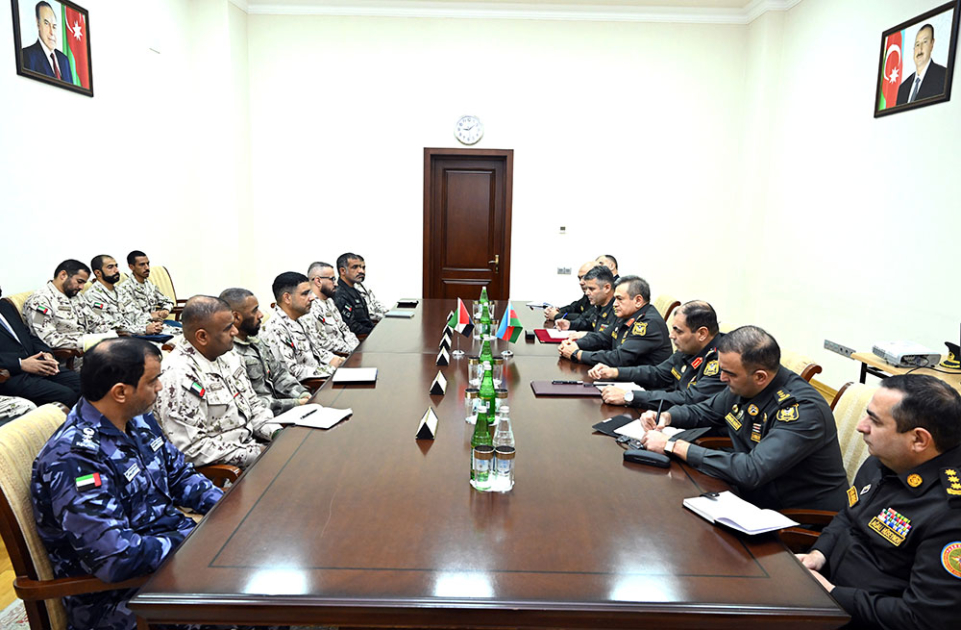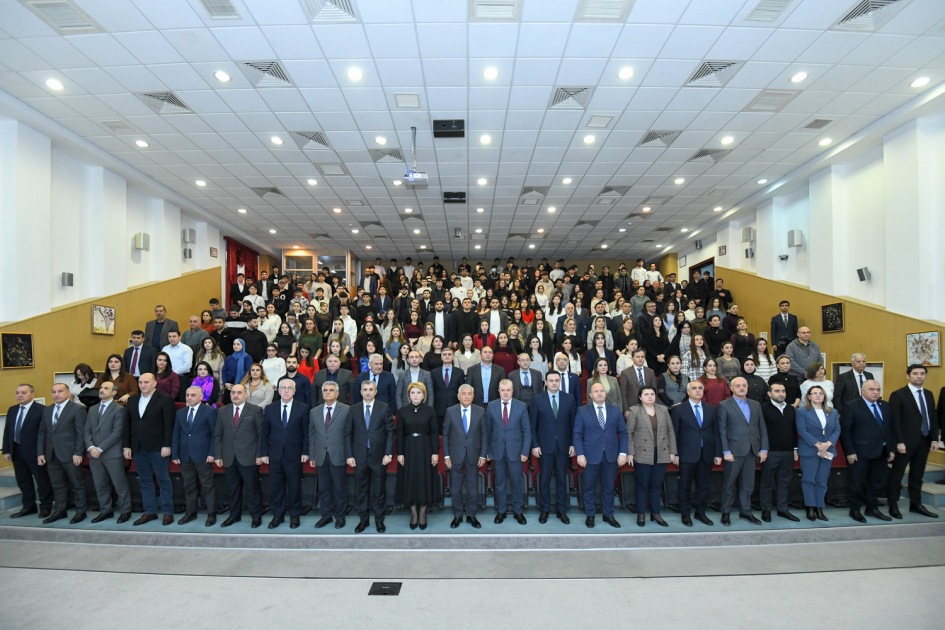Azerbaijani Minister of Agriculture Majnun Mammadov gave an exclusive interview to Report:
- According to official statistics, the share of agriculture in Azerbaijan's gross domestic product (GDP) does not exceed 10%. To what extent does Azerbaijan, which aims to develop the non-oil sector and diversify its economy, effectively use its agricultural potential? How is it possible to increase the share of this sector in the GDP?
- The efficient utilization of agricultural potential and the share of the agrarian sector in GDP are, to a certain extent, distinct topics. Azerbaijan's strategy for agricultural development does not aim to increase the sector's share in GDP. Global experience suggests that a contribution of agriculture to GDP exceeding 10% is characteristic of African countries and some Latin American and Asian nations, while in moderately developed countries, this figure ranges between 4% and 8%, and in developed countries like the United States and European Union members, it falls between 0.5% and 3%. Moreover, the share of agriculture in the global economy is on a declining trend. In modern times, agriculture primarily serves to meet people's food needs and often relies heavily on government support for its operations. In line with the practices of leading countries, Azerbaijan's socio-economic development strategy envisions economic growth driven mainly by the industrial and service sectors of the non-oil economy.
Regardless of the share of the agricultural sector in Azerbaijan's GDP, efficiently utilizing the sector's potential remains our primary task. It is no coincidence that the country implements multifaceted support measures to develop the agricultural sector and incentivize those engaged in this field.
Currently, we can divide the issues related to the efficient use of Azerbaijan's agricultural potential into three directions:
The first direction is achieving optimal food self-sufficiency levels. A particularly pressing issue is increasing the local production potential of bread wheat. President Ilham Aliyev has approved a program in this regard it is being implemented. We also face the task of increasing meat and dairy production through intensive methods. To this end, we must further increase the share of intensive farms, encourage the development of the fattening industry, and continue supporting the modernization of industrial poultry enterprises.
The second direction is enhancing agricultural export potential. Fruit and vegetable production and technical crops, particularly cotton production, are our main export-oriented sectors. The main activity in this direction is expanding intensive orchards. A special subsidy program is currently in place to encourage the establishment of new intensive orchards. Increasing the export potential of cotton products involves boosting raw cotton production through more advanced technologies and strengthening the cotton cluster's processing components. Diversifying export markets for agricultural and food products is also a key challenge.
The third direction is further developing the export-based processing industry for agricultural products. Currently, the ratio of value added in the agricultural product processing industry to value added in the agricultural sector is approximately 0.3 in Azerbaijan. In developed countries, this ratio is 1-1.5. Over the medium term, this ratio can be increased to about 0.5 in Azerbaijan. Potential areas for this include yarn and fabric production from cotton, olive oil and cottonseed oil production based on local raw materials, dairy production based on local natural raw materials, natural grape wines and brandy production based on local raw materials, and fruit and vegetable processing sub-sectors such as tomato juice and tomato production, pomegranate juice, hazelnut products, dried fruits and raisins, fruit and grape vinegar, and fruit puree production. One of the main tasks is to further improve incentive mechanisms for the development of these areas.
Of course, the main task in terms of both strengthening food security and further increasing agricultural export potential is to expand the application of agricultural methods such as precision farming, using resource-saving and climate-sensitive technologies, and adherence to crop rotation. Directing incentive measures in agriculture towards these issues is a priority.
- Azerbaijan is still unable to meet its own demand for bread wheat. However, last year, the state supply price of bread wheat was reduced by 22.4% and was set at 450 manats/ton ($264.71/ton). Are the measures taken to stimulate wheat production in the country effective? When can Azerbaijan end its dependence on imports?
- Our assessments show that the country's self-sufficiency in bread wheat has jumped from approximately 25% to an impressive 34% in 2023. As I mentioned, the program approved by Mr. President is currently being implemented in the country to increase the local bread wheat production potential. The main incentive mechanism under this program is that entrepreneurs are supported with subsidies and concessional loans to expand the use of pivot irrigation systems that ensure high productivity in wheat production. Also, for the first time, a crop subsidy is applied to flour processing enterprises and bread wheat delivered for state reserves. The reduction of the state supply price of bread wheat last year is based on the existing regulations. According to the regulations, the cost indicators of bread wheat are calculated and declared every year. This is why the supply price was reduced last year. The production costs of wheat in 2022 were high, especially due to the sharp increase in the prices of fertilizers, and in 2023, the corresponding costs decreased significantly, which naturally defined the decrease in the cost of wheat.
As for the issue of dependence on bread wheat imports, it is not about ending imports, but about reducing dependence on imports. It is not possible to completely end the import of wheat because the production of agricultural products in each country depends primarily on natural resources and climatic conditions. Our natural climatic conditions and soil resources are favorable for growing fruits and vegetables and some technical plants. The experience of some countries shows that the production of wheat, and the production of grain products in general, is based on mostly dry conditions and even very low productivity in large areas. In our region, Russia, Ukraine, Kazakhstan, and other major grain-growing countries of the world, USA, Canada, Australia, Argentina, European countries France, Germany, Romania, etc. have almost the same grain-growing business model. – large areas, low added value per hectare and thousands of hectares of cereal crops per producer. Just as in the former Soviet era, Russia, Ukraine, and Kazakhstan were the main sources of grain for the republics of the union, and the supply of fruits and vegetables depended on us and other republics, similarly now in the countries of the European Union, for example, France, Germany, Romania, etc. countries mainly produce grain, instead, for example, the Netherlands, Italy, Spain, mainly produce fruits and vegetables. As a result of this specialization, high-added value is created in each country.
Unfortunately, the ongoing unstable conditions in the world force us to provide ourselves with the main food products, especially wheat, as much as possible through local production at the expense of our own resources. As a result, we cannot fully develop the areas where we have a greater comparative advantage in international specialization, and where we can create higher added value.
Since we do not have the necessary natural resources to increase the volume of wheat production to the level to meet our demand, we have to increase the volume of local production as much as possible, even at the expense of low economic efficiency by increasing productivity through technological development at the expense of large investments, including state funds, and try to reduce import as much as possible. From this point of view, it would be very acceptable to increase the rate of self-sufficiency in bread wheat to approximately 50-60%.
- Last year, the Agrarian Credit and Development Agency under the Ministry allocated 73.7 million manat ($43.35 million) concessional loans and leasing funds based on 4,000 applications, but as a result, only 355 permanent and temporary jobs were opened. How to increase the effectiveness of loans in terms of employment of the population?
- Not all of the allocated funds have been distributed as direct loans to farmers in Azerbaijan. Instead, a significant portion has been utilized to provide farmers with access to machinery and equipment under favorable terms. Recent studies reveal that only 12-15% of farmers registered in the Electronic Agricultural Information System (EKTIS) can obtain loans. This low figure highlights the urgent need for improved financial mechanisms in the agricultural sector.
It's crucial to note that the government's approach to agricultural regulation is not solely focused on employment figures. In fact, Azerbaijan has one of the highest rates of agricultural employment globally - a statistic that isn't necessarily positive. The challenge now lies not in creating new agricultural jobs, but in expanding income-generating opportunities for those already employed in the sector.
Over the past two decades, there has been a consistent decline in agricultural employment worldwide, both in relative and absolute terms. Global statistics show a 13.5 percentage point decrease in agriculture's share of total employment, with the absolute number of agricultural workers declining by approximately 13%. This trend is characteristic of countries aiming to develop more competitive modern industrial and service sectors.
- In a situation where global warming is widespread and water resources are decreasing, very few irrigation systems are controlled. Which countries' experience can be used to change the situation?
- Yes, unfortunately, it is true. However, within the framework of the policy of sustainable development of the agricultural sector, the introduction of modern irrigation systems in our country is encouraged through subsidies. That is, the state subsidizes 40% of the cost of contemporary irrigation equipment. The world experience shows that a similar support mechanism is applied in different countries.
Modern irrigation systems are currently applied in approximately 100,000 hectares of land in the country. The expansion of these areas will continue, especially the implementation of the bread wheat program, as well as the promotion policy for the establishment of new intensive gardens will play a positive role here.
The creation of new reservoirs will contribute to the efficient use of water in our country. At the same time, there is a need to speed up the transition to closed water networks and to measure water in the field in order to ensure the economical use of water in modern times. The experience of Türkiye and Israel can be cited as examples. Controlled irrigation systems are used in all fields in Israel, and flood irrigation is prohibited. Recently, in Türkiye, water transport has been rapidly changed to a closed system.
- Drought damaged about 160,000 hectares of land in Azerbaijan by last year. Has agricultural insurance been able to become an effective mechanism for covering losses? What percentage of this type of insurance’s potential is used?
- There is an agrarian insurance system that has been operating for several years with the mechanism of public-private partnership. Currently, the number of insured plants has been increased to 41 species. Livestock, including dairy cattle, and beef cattle are also insured.
However, agricultural insurance indicators are still characterized by the results of the initial stage. For example, in 2023, 46,500 contracts were signed, which covered 429,000 ha of arable land and 7,901 head of animals. However, there is a positive point here, as a generalized indicator, collected insurance premiums exhibit growth dynamics every year compared to previous years, which in turn shows that farmers and entrepreneurs benefit from insurance services.
At the moment, measures are being taken to expand the provision of insurance services to the agricultural sector due to the increase of the insurance subject and the number of insurance risks. There is not enough data yet to apply drought insurance. For this reason, the risk probability in any area, its scope and the damage it can cause cannot be calculated. In such circumstances, the application of this type of insurance exposes the insurance institution to the risk of not being able to meet its insurance obligations and may lead to the bankruptcy of the insurance institution. In this case, other insurers will also lose. For this reason, drought insurance can be applied over time as reliable and measurable data is collected.
- The main export market of Azerbaijan's agricultural products has been Russia for many years. What are the obstacles to export the fruits and vegetables of Azerbaijan to the US and European markets?
- In fact, there are a number of objective and subjective reasons that are more important than obstacles. The share of the Russian market in Azerbaijan's agricultural products is high is due to historical traditions as well as an objective reason.
For example, Russia is one of the world's largest importers of agricultural and food products (Russia is the 13th largest importer of the relevant products in the world, including the 13th largest importer of vegetables and the 7th largest importer of fruits). It is also an attractive market for countries from different geographies.
Exporting from Azerbaijan to the Russian market, which is quite attractive for the export of agricultural and food products, is also profitable in terms of logistics. The world experience shows that the countries of the region have a superior share in the export of agricultural and food products, including the export of Uzbekistan, which has a similar export structure to Azerbaijan in the relevant field. The studies reveal that in Uzbekistan's vegetable exports, other neighboring countries, Kazakhstan, have a share of 20%, Pakistan 19%, China 13%, Afghanistan 11%, Kyrgyzstan 9%, and Russia 17%. Similarly, Kazakhstan has 28%, Kyrgyzstan 24%, China 3%, Ukraine 2%, and Russia has a 32% share in Uzbekistan's fruit exports.
Uzbekistan's ability to export to other neighboring countries allows this country to reduce its export dependence on the Russian market, which is one of the largest markets in the world. The situation regarding the market of neighboring countries is different for Azerbaijan compared to Uzbekistan. The Georgian market is small (Türkiye and Iran also actively participate in this market), and the import-export structure of Iran and Azerbaijan in the agricultural sector is similar.
In short, there are objective reasons for the high share of the neighboring Russian market, which is one of the largest markets in the world, in the export of agricultural products of Azerbaijan. Discussions with representatives of the private sector in particular show that, unlike economic policy experts or independent experts, existing exporters consider the Russian market to be a more profitable market both in terms of price and logistics.
In other words, entrepreneurs who export products worth millions of dollars every year, the players in the export process, have not yet put forward any serious initiatives to enter the export market beyond Russia (except for episodic cases). Entrepreneurs have recently started to have certain experience in exporting products to the Middle East, Asian and European markets. The main issue is to encourage the further expansion of the scale of these practices, in other words, the diversification of export markets.
Access to more markets, and wider integration into the global market, that is, the process of diversification of export markets, which is quite important for us, requires a completely different approach to the policy of strict protection of the domestic market. This approach can be taken into account, especially in the newly created regional logistics infrastructure and the strategic alliance relations with Türkiye with the active initiative of Azerbaijan. The expansion of our agricultural and food products trade with Türkiye will ensure our more active participation in the European and Middle Eastern markets in the future.
In addition to the mentioned objective reasons, the strict protection of domestic markets for agricultural and food products by European countries with tariff and non-tariff methods is also a very serious factor. European countries applying high tariffs to countries that are not members of the union, as well as Azerbaijan's lack of favorable preferential trade agreements with these countries, reduce the attractiveness of Azerbaijani products for the European market. The requirements of food safety standards, biological safety and technical regulations in European markets also act as limiting factors for Azerbaijani exports.
On the other hand, we have a weak certification for European markets. The conformity of production, sorting, packaging and distribution activities of relevant products in Azerbaijan to the standards/technical norms regulated by strict rules in European countries is at a low level. The relevant certification system/process should be developed. Considering this, we will implement a support measure to encourage farmers to apply for international certificates at a further stage.
It is necessary to take into account that diversification of the export structure regarding products is also relevant in terms of expanding the export geography of Azerbaijan's agricultural products. We believe that the diversification of the export structure regarding products will have a positive effect on the expansion of the geographic structure of the markets.
For example, approximately 90% of the agricultural and food products exported from Azerbaijan to European countries are hazelnut kernels, and a small part is pomegranate juice. We believe that hazelnut growing and pomegranate growing as export-oriented fruit-growing areas in the agricultural sector of Azerbaijan have the potential for further expansion. Also, due to the increase in the production of stone fruits such as cherries, cherries, nectarines, plums, and apricots, whose exports have been highly dynamic in recent years, it is possible to export to the markets of China and other Asian countries in addition to the traditional Russian market.
At the same time, the short shelf life of our products has led our exporters to the neighboring Russia. With the development of our processing industry, products with a longer shelf life can be produced and the possibility of exporting to more distant countries will increase.
Moreover, the lack of stable product supply in volumes corresponding to the demand of European countries and trade networks in other large markets is another export issue. In other words, the demand for a stable supply of large volumes of products to the trade networks of these countries makes it difficult for Azerbaijan to enter those markets.





